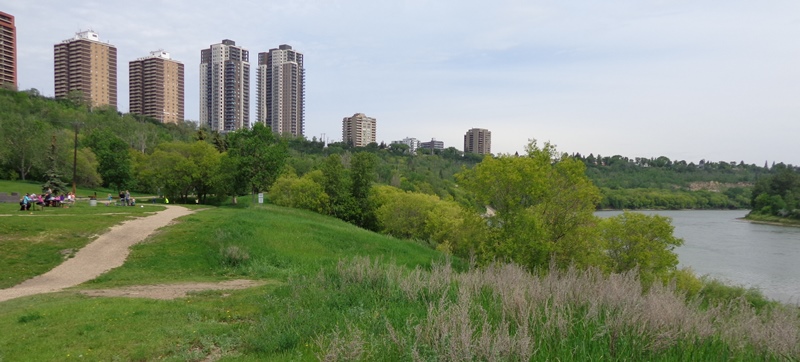Dawson Park and Kinnaird Ravine are important links in Edmonton's river valley park network. To help ensure Dawson Park and Kinnaird Ravine remain a celebrated and cherished public space, the City has completed a master plan to establish a 25-year vision and management plan for the park.
The finalized Dawson Park and Kinnaird Ravine Master Plan (24MB) has been approved by City Administration. Currently, funding is not available for implementation of the Master Plan. Should funding become available through partnerships or future City capital budgets, the Master Plan will guide development of the park.
The Master Plan vision, principles and associated elements will guide future development in the park. It includes a preferred concept, which was developed with input and ideas gathered during several public engagement events. It provides recommendations to meet the park vision and objectives, including:
Park Use and Amenities
Support existing park uses and ensure anticipated future park use can be supported. This includes accessibility, usability, winter programming, river access for boating and recreation, and adjustments to off-leash areas.
Connectivity and Circulation
Support the continued use of the trails and help to reduce user conflict. This includes improvements to vehicle access, parking, trail improvements, entrance improvements, connection to the active transportation network, and wayfinding improvements.
Nature and Ecology
Protection of the existing habitat and enhance ecological linkages in the park. This includes the protection of existing natural features, awareness of environmental sensitivities, protection of historical resources in the park, implementation with low impact on natural features, restoration of the riverbank, and renaturalization of disturbed areas.
Safety and Maintenance
Park improvements to facilitate operations and maintenance in the park with the intention of improving safety for all visitors. This includes improving sightlines, signage, lighting, and support for outreach efforts through amenity improvements.
Identity and Experience
To strengthen visitors’ connections to the park’s history and identity in the River Valley through the implementation of interpretive elements and programming. This includes interpretive elements, public art, nature education, and interpretation.
Project Overview
The last comprehensive planning process for Dawson Park was undertaken in the 1970s through the development of the Capital City Recreation Park Concept Plan. Most of the infrastructure that exists in Dawson Park is a legacy of that plan including a parking lot, hiking and biking trails, a rest area with toilets, benches, and preserved natural area.
While Dawson Park has not seen a significant change since the 1970s, the surrounding communities, recreation demands, and the city certainly have. The growing communities of Cromdale and Boyle Street, while visually linked to the park, remain physically disconnected. Social issues within the park pose both environmental risks and safety concerns for area residents and park users. Noxious and invasive plant species present in the park threaten the area's biodiversity. The master plan process provides a starting point to investigate these and other issues, identify solutions and partnerships and establish a framework for moving forward.
Public engagement involving the surrounding neighbourhoods, stakeholders and city-wide residents began in 2016 and was completed in 2017. Public engagement was completed in 4 phases.
The Dawson Park and Kinnaird Ravine Master Plan helps create a lasting legacy for Dawson Park that reflects the needs of today while enhancing and preserving the ecological integrity of Dawson Park as part of Edmonton’s river valley park system for generations to come.
Project Timeline

Future: Implementation of the Master Plan dependent on available funding
2019: City Administration approval of the finalized Dawson Park and Kinnaird Ravine Master Plan.
2018-2019: Draft Dawson Park and Kinnaird Ravine Master Plan and associated documents
2017-2018: Public Engagement
2016-2017: Public Engagement



